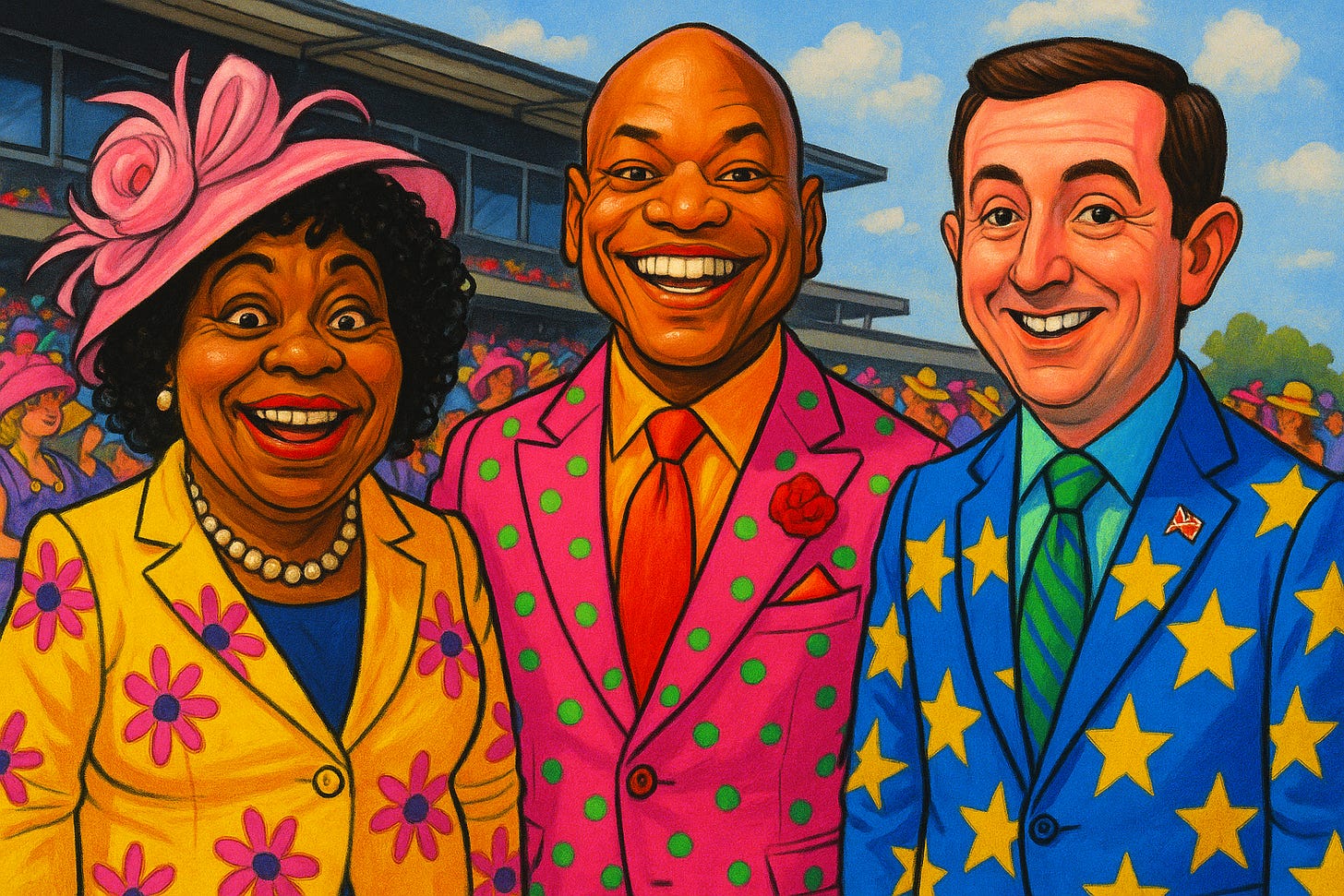Betting on the Past: The High Cost of Wes Moore’s Preakness Nostalgia
Charm City’s Costly Time Machine
All too often, Maryland's - and especially Baltimore's – political class seems to suffer from a kind of Acute Nostalgia Disorder. This reflects a desire to bring back the ways things used to be in Charm City.
Trolleys used to be the way people commuted? Wes Moore wants to build the light rail Red Line at a cost of up to $7 billion. [i]
The Inner Harbor was a tourist destination? Subsidize it with $400 million in support.[ii]
The Preakness used to be a premier social event in Maryland? Rebuild Pimlico at the State's expense. [iii]
Last year, Governor Wes Moore signed legislation to take over ownership of and rebuild Baltimore's sadly dilapidated Pimlico Racecourse.[iv] Maryland will use $400 million in state funding to rebuild the Preakness Stakes’ home, the second leg of horse racing's Triple Crown.
"Because of this bill, we have a path forward to continue running the Preakness in Maryland and renovate the historic Pimlico Racecourse. This bill will create lasting economic benefits to the state and the Baltimore region," claimed Maryland House Speaker Adrienne Jones. [v]
Really?
In 2023, the State had 274 days and nights of licensed live racing. Total attendance was 216,000, an average of 800 people per event. And this includes the one-time Preakness attendance spike of 63,000.[vi] Since 2008, total gambling revenue for races held at the tracks has dropped by 77% from $325 million to $75 million. (Another $43 million came from simulcast races.) [vii]
Once upon a time, horse racing held a privileged position as a legally sanctioned way to gamble. But now, from the state lottery to casino gambling, horse tracks have become an also-ran in the race for punters' dollars.
Maryland's six casinos combined to generate far more revenue from slot machines and table games in a single month, April 2025, $163 million. That’s more than twice as much as an entire year’s gambling at Maryland’s tracks. This stark contrast is a testament to the changing times and the diminishing significance of horse racing. [viii]
So here is Wes Moore’s grand vision plan for Maryland’s future: Spend hundreds of millions to rebuild Pimlico racetrack to host the Preakness once a year. At the same time, he slams IT services with new taxes—a tax likely to drive many businesses and well-paying jobs out of the state.
That’s a vision of the future that Maryland can do without.
[i] https://governor.maryland.gov/news/press/pages/governor-moore-announces-light-rail-as-recommended-mode-for-baltimore%E2%80%99s-red-line.aspx; https://foxbaltimore.com/news/city-in-crisis/economist-warns-baltimores-7-billion-red-line-could-strain-state-finances
[ii] https://baltimorefishbowl.com/stories/a-lot-of-money-experts-ponder-how-baltimore-should-spend-400m-in-public-subsidies-to-support-privately-funded-harborplace-redevelopment-plans/
[iii] https://www.baltimoresun.com/2024/03/21/propping-up-the-ponies-at-pimlico-is-a-bad-bet-for-maryland-guest-commentary/
[iv] https://wtop.com/other-sports/2024/05/maryland-governor-signs-bill-to-rebuild-pimlico-home-of-the-preakness-stakes/
[vi] https://www.baltimoresun.com/2024/05/20/preakness-attendance-triple-crown/
[viii] https://labor.maryland.gov/racing/mrcannrep2023.pdf; https://thebaynet.com/maryland-casinos-generate-162-6-million-in-gaming-revenue-during-april-2025/




